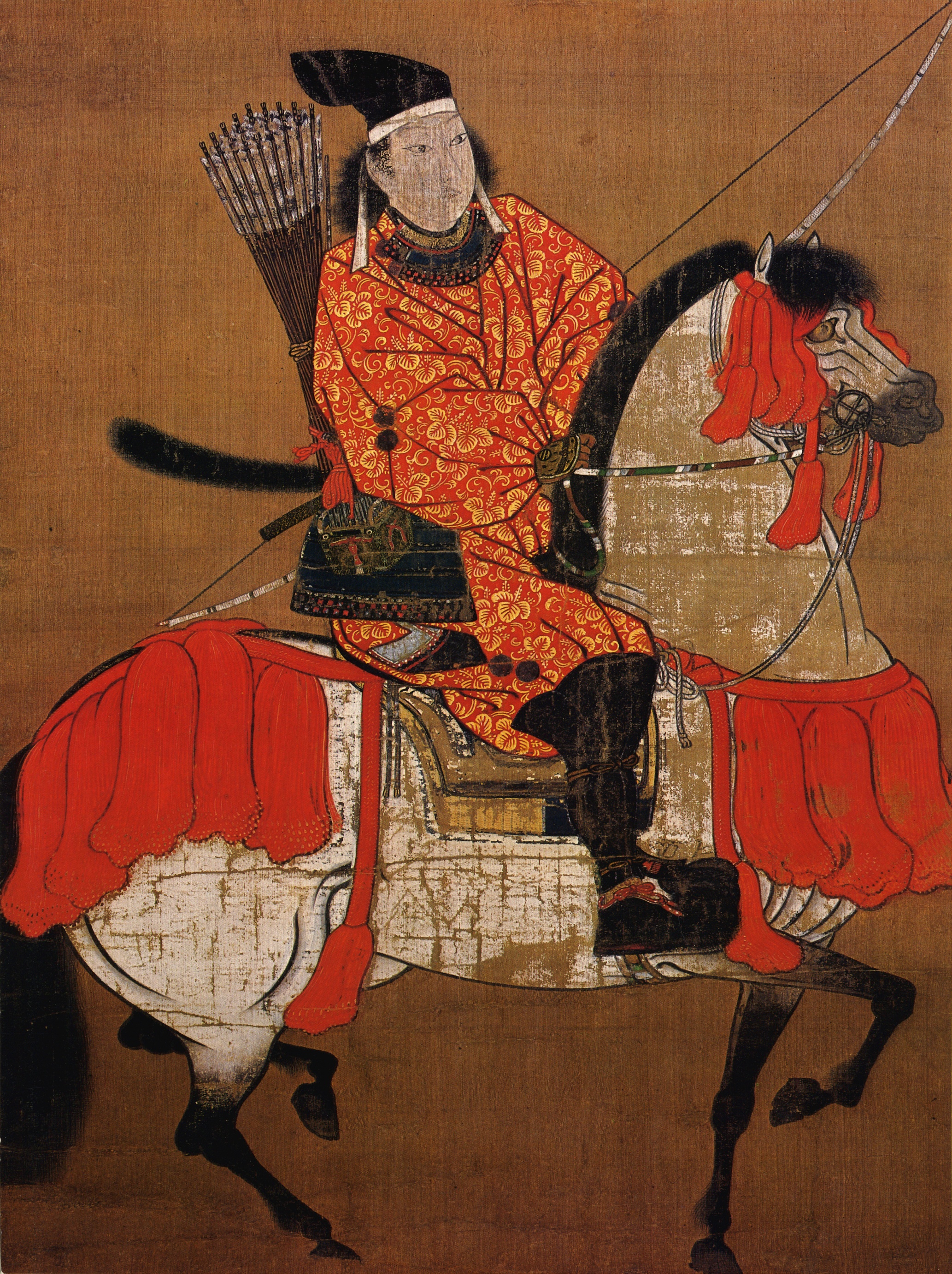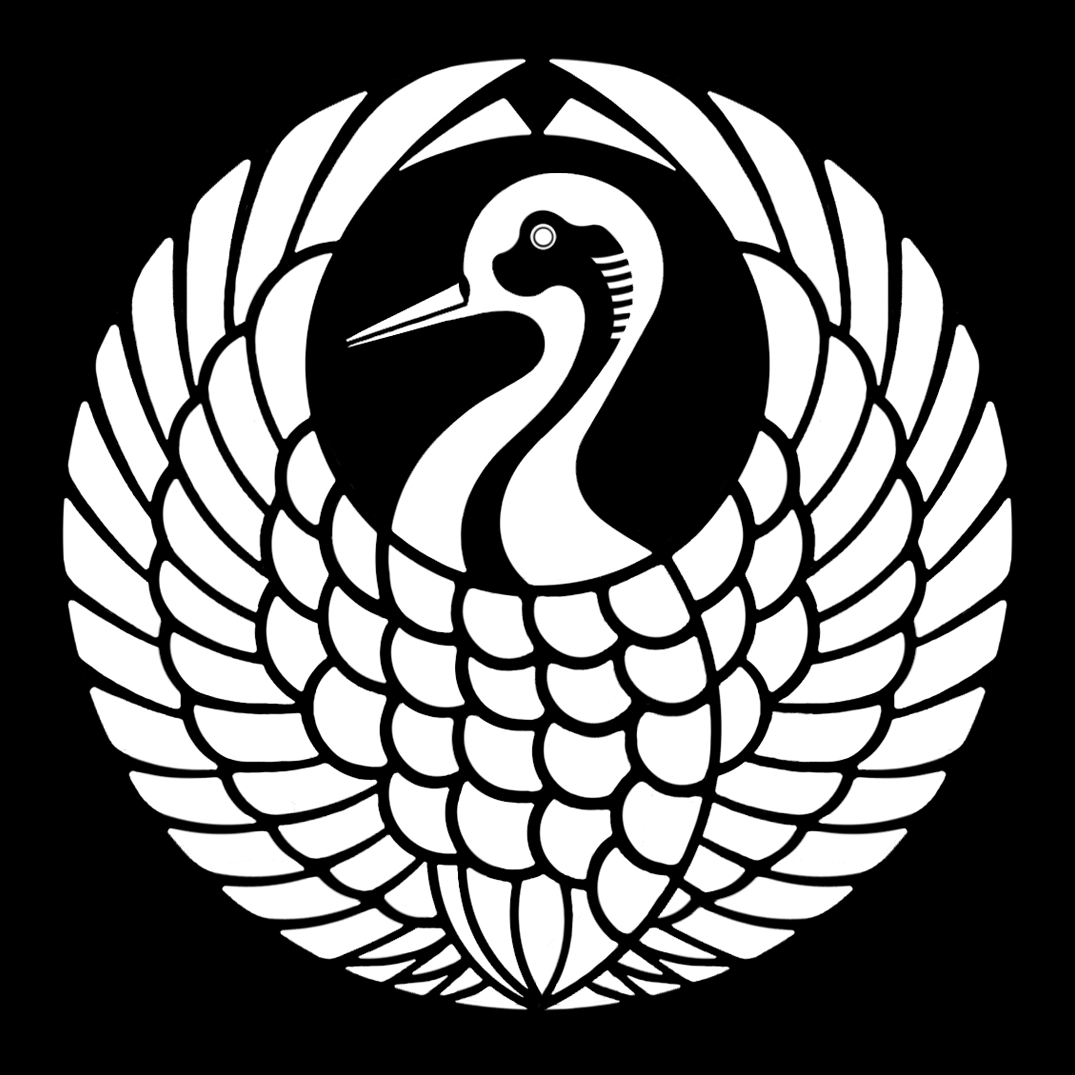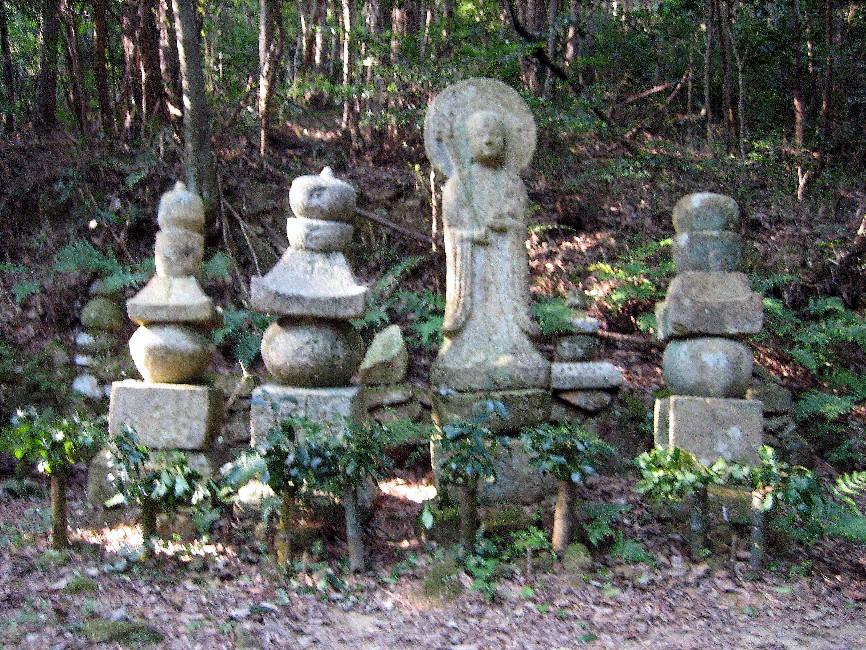|
Yamana Sōzen
was originally before becoming a monk. Due to his red complexion, he was sometimes known as ''Aka-nyūdō'', "the Red Monk". He was one of the ''shogun'' ''daimyōs'' who fought against Hosokawa Katsumoto during the Ōnin War in Heian-kyō. Biography Yamana Sōzen was born to Yamana Tokihiro (1367–1435), head of the Yamana clan. Tokihiro was the ''shugo'' (provincial governor) of Tajima Province, Tajima, Bingo Province, Bingo, Aki Province, Aki, and Iga Province, Iga provinces. Tokihiro, who was often in bad health, retired in 1433 and passed his numerous lands to Sōzen. Sōzen went on to defeat Akamatsu Mitsuhide (1373–1441) of Akamatsu clan in the Kakitsu uprising, Kakitsu Incident, and became governor of Harima Province the same year. The Yamana clan had seen many defeats over the years, while the Hosokawa clan was one of the three families which controlled the position of ''kanrei'', deputy to the shōgun. Thus, Yamana Sōzen resented the wealth and power enjoyed by hi ... [...More Info...] [...Related Items...] OR: [Wikipedia] [Google] [Baidu] |
Heian-kyō
Heian-kyō was one of several former names for the city now known as Kyoto. It was the official capital of Japan for over one thousand years, from 794 to 1868 with an interruption in 1180. Emperor Kanmu established it as the capital in 794, moving the Imperial Court there from nearby Nagaoka-kyō at the recommendation of his advisor Wake no Kiyomaro and marking the beginning of the Heian period of Japanese history. According to modern scholarship, the city is thought to have been modelled after the urban planning for the Tang dynasty Chinese capital of Chang'an (modern-day Xi'an). It remained the chief political center until 1185, when the samurai Minamoto clan defeated the Taira clan in the Genpei War, moving administration of national affairs to Kamakura and establishing the Kamakura shogunate. Though political power would be wielded by the samurai class over the course of three different shogunates, Heian-kyō remained the site of the Imperial Court and seat of Imperi ... [...More Info...] [...Related Items...] OR: [Wikipedia] [Google] [Baidu] |
Japanese Calendar
Japanese calendar types have included a range of official and unofficial systems. At present, Japan uses the Gregorian calendar together with year designations stating the Japanese era name, year of the reign of the current Emperor. The written form starts with the year, then the month and finally the day, coinciding with the ISO 8601 standard. For example, February 16, 2003, can be written as either or (the latter following the regnal year system). reads and means "year", reads and means "month", and finally (usually) reads (its pronunciation depends on the number that precedes it, see below) and means "day". Prior to the introduction of the Gregorian calendar in 1873, the reference calendar was based on the lunisolar Chinese calendar. History File:Briefly_Abridged_Calendar_of_1873%2C_Hiroshige_Museum_of_Art.JPG, Briefly Abridged Calendar of 1873 File:Calendar_for_1907%2C_Nakai_Tokujiro_%28Pub.%29%2C_Hiroshige_Museum_of_Art.JPG, Calendar for 1907 Over the centuries, ... [...More Info...] [...Related Items...] OR: [Wikipedia] [Google] [Baidu] |
Ōnin
was a after '' Bunshō'' and before ''Bunmei''. This period spanned the years from March 1467 through April 1469. The reigning emperor was . Change of era * 1467 : The era name was changed to mark an event or a number of events. The old era ended and a new one commenced in ''Bunshō'' 2. Events of the ''Ōnin'' era The ''Ōnin War'': This conflict began as a controversy over whether at Ashikaga Yoshimasa's retirement as shōgun he should be succeeded by his brother (Yoshimi) or his son ( Yoshihisa); but this succession dispute was merely a pretext for rival groups of ''daimyōs'' to fight in a struggle for military supremacy. In the end, there was no clear-cut winner. The complex array of factional armies simply fought themselves into exhaustion.Varley, H. Paul. (1973). ''Japanese Culture: A Short History'', p. 84. * 1467 (''Ōnin 1, 1st month''): Yamana Sōzen and Hatakeyama Yoshinari took up positions around the Muromachi-dono, the Ashikaga residence in Heian-kyō where the ... [...More Info...] [...Related Items...] OR: [Wikipedia] [Google] [Baidu] |
Ashikaga Yoshihisa
was the 9th ''shōgun'' of the Ashikaga shogunate who reigned from 1473 to 1489 during the Muromachi period of Japan.Ackroyd, Joyce. (1982) ''Lessons from History: The Tokushi Yoron'', p. 331. Yoshihisa was the son of the eighth ''shōgun'' Ashikaga Yoshimasa with his wife Hino Tomiko. Since the almost 30-year-old ''shōgun'' Yoshimasa had no heir by 1464, he adopted his younger brother Ashikaga Yoshimi to succeed him. However, Yoshihisa was born in the next year starting a struggle for succession between brothers that erupted into the Ōnin War starting in 1467, beginning the Sengoku period of Japanese history. In the middle of hostilities, Yoshimasa retired in 1473, relinquishing the position of ''Sei-i Taishōgun'' to Yoshihisa. Events of Yoshihisa's ''bakufu'' Yoshihisa's shogunal administration begins in 1479. The Kaga Rebellion occurs in 1488 in Kaga Province during his reign. The next year, Yoshihisa dies in camp during campaign against Sasaki Takayori; Yoshimasa res ... [...More Info...] [...Related Items...] OR: [Wikipedia] [Google] [Baidu] |
Hino Tomiko
was a prominent figure during the Muromachi period and the beginning of the Sengoku period. She was daughter to Hino Shigemasa and was the official wife of Ashikaga Yoshimasa, the eighth ''shōgun'' of the Ashikaga shogunate (at first Tomiko was betrothed to Ashikaga Yoshikatsu the seventh shōgun but Yoshikatsu died at the age of 10), and the mother of Ashikaga Yoshihisa, the ninth ''shōgun''. Her efforts during the succession dispute are seen as one of the causes of the Ōnin War and led to the beginning of the Sengoku period. Early life Hino Tomiko was born into the Hino family, a powerful family whose women became consorts to many previous Shoguns. These familial connections enhanced the Hino's power to control the Shogunate Court. Tomiko played an important role in strengthening the Hino family's relationship with the Shogunate and enabling it to grow ever more powerful. When Tomiko's social and political status rose after her marriage to Ashikaga Yoshimasa, she ... [...More Info...] [...Related Items...] OR: [Wikipedia] [Google] [Baidu] |
Ashikaga Yoshimi
(March 3, 1439 – February 15, 1491) was the brother of Shōgun Ashikaga Yoshimasa, and a rival for the succession in a dispute that would lead to the Ōnin War. Life Yoshimi was the abbot of a Jōdo monastery when he was first approached in 1464 by Hosokawa Katsumoto, who wished to support a bid for Yoshimi to become shōgun. He originally sought to stick to his religious life, and had no desires to become shōgun. However, by 1464, he was convinced to join his brother, the shōgun, and assist him, putting himself into a position to be the next in the line of succession. The birth of the Shōgun's son placed Yoshimi in an awkward situation, making his succession no longer definite, but he remained as Yoshimasa's Deputy. Despite Yoshimi's support by Hosokawa, it was Hosokawa's opponent, Yamana Sōzen, who stayed in Yoshimi's mansion for a time, and who attended a ceremony in March 1467 honoring the shōgun and his brother. Hosokawa did not attend, as he was preparing for t ... [...More Info...] [...Related Items...] OR: [Wikipedia] [Google] [Baidu] |
Ashikaga Yoshimasa
"Ashikaga Yoshimasa" in ''Encyclopædia Britannica, The New Encyclopædia Britannica''. Chicago: Encyclopædia Britannica Inc., 15th edn., 1992, Vol. 1, p. 625. was the eighth ''shōgun'' of the Ashikaga shogunate who reigned from 1449 to 1473 during the Muromachi period of Japan. His actions led to the Ōnin War (1467–1477), which triggered the Sengoku period. His reign saw a cultural flourishing in the arts, the development of East Asian tea ceremony, tea ceremony, Zen Buddhism and Wabi-sabi, wabi-sabi aesthetics. Biography Yoshimasa was the son of the sixth shōgun Ashikaga Yoshinori. His childhood name was Miharu (三春). His Seishitsu, official wife was Hino Tomiko. On August 16, 1443, the 10-year-old ''shōgun'' Yoshikatsu died of injuries sustained in a fall from a horse. He had been shōgun for only three years. Immediately, the ''bakufu'' elevated Yoshinari, the young shōgun's even younger brother, to be the new ''shōgun''. Several years after becoming shōgun ... [...More Info...] [...Related Items...] OR: [Wikipedia] [Google] [Baidu] |
Kanrei
or, more rarely, ''kanryō'', was a high political post in feudal Japan; it is usually translated as ''shōguns deputy''. After 1349, there were actually two ''Kanrei'', the ''Kyoto Kanrei'' and the ''Kantō Kanrei''. But originally from 1219 until 1333, the post was synonymous with the ''Rokuhara Tandai'', and was based in Kyoto. The Hōjō clan monopolized this post, and there were during this period two Deputies – a southern chief, and a northern chief. From 1336 to 1367, the Deputy was called . The first to hold this title was Kō no Moronao. Following the fall of the Kamakura shogunate and abolition of the ''Rokuhara Tandai'' position, both occurring in 1333, Ashikaga Takauji created the post of ''Kantō Kanrei'', or Shogun's Deputy in the East ('' Kantō'' generally refers to the area around and including modern Tokyo). In 1367, Hosokawa Yoriyuki was chosen by a council to become Deputy (Kyoto ''Kanrei''). In order to ensure the loyalty of his colleagues, the Hatakeyam ... [...More Info...] [...Related Items...] OR: [Wikipedia] [Google] [Baidu] |
Hosokawa Clan
The is a Japanese samurai kin group or Japanese clan, clan. The clan descends from the Seiwa Genji, a branch of the Minamoto clan, and ultimately from Emperor Seiwa, through the Ashikaga clan. It produced many prominent officials in the Ashikaga shogunate's administration. In the Edo period, the clan was one of the largest landholding daimyo families in Japan. The current clan head Morihiro Hosokawa served as Prime Minister of Japan. Muromachi and Sengoku periods Ashikaga Yoshisue, son of Ashikaga Yoshizane, was the first to take the surname of Hosokawa. Hosokawa Yoriharu, a Hosokawa of the late Kamakura period, fought for the Ashikaga clan against the Kamakura shogunate. Another, Hosokawa Akiuji, helped establish the Ashikaga shogunate. The clan wielded significant power over the course of the Muromachi period, Muromachi (1336–1467), Sengoku period, Sengoku (1467–1600), and Edo periods, moving, however, from Shikoku, to Kinai, and then to Kyūshū over the centuries. The c ... [...More Info...] [...Related Items...] OR: [Wikipedia] [Google] [Baidu] |
Kakitsu Uprising
The was a peasant uprising demanding debt cancellation that occurred in 1441, the 1st year of Kakitsu, in Kyoto and surrounding areas such as Ōmi Province. Background In August, amidst the political chaos following the assassination in June of the 6th shōgun Ashikaga Yoshinori, peasants revolted, with the bashaku of Kyoto and Sakamoto and Otsu in Ōmi Province at their core, in demand of a comprehensive debt cancellation order on the basis of "daihajime no tokusei", debt relief on the occasion of the ascension of a new shōgun. Jizamurai took the leadership of the movement and it swelled into a revolt of several tens of thousands of people. This insurrection did not spread everywhere, but rather formed a ring around Kyoto. Rebellion After severing communication between Kyoto and the outside world, the rebel army attacked sake merchants, storehouse money brokers, and temples. Under the guidance of ji-samurai, the rebel force acted in an organized manner and kept a lid on w ... [...More Info...] [...Related Items...] OR: [Wikipedia] [Google] [Baidu] |
Akamatsu Clan
is a Japanese samurai family of direct descent from Minamoto no Morifusa of the Murakami-Genji (Minamoto clan). Papinot, Jacques Edmond Joseph. (1906). ''Dictionnaire d’histoire et de géographie du Japon''; Papinot, (2003)"Akamatsu" at ''Nobiliare du Japon'', p. 1 retrieved 2013-4-11. History They were prominent shugo-daimyō in Harima during the Sengoku period. The clan was founded in 1366 by Akamatsu Norimura after allying himself with Ashikaga Takauji to fight the Kamakura Shogunate and were one of only four families made eligible to head the ''Samurai Dokoro'' during the time of the Muromachi Shogunate. During the Ōnin no ran (1467–1477), Akamatsu Masanori was one of the chief generals of the Hosokawa clan. The head of the clan at Shizuoka in Suruga Province became a ''kazoku'' baron in 1887.'''' The Shinmen clan were a branch of the Akamatsu.Yoshikawa, Eiji. (1995) ''Musashi,'' p. 94 Select members of the clan * Akamatsu Norimura (1277–1350). Hall, Joh ... [...More Info...] [...Related Items...] OR: [Wikipedia] [Google] [Baidu] |






